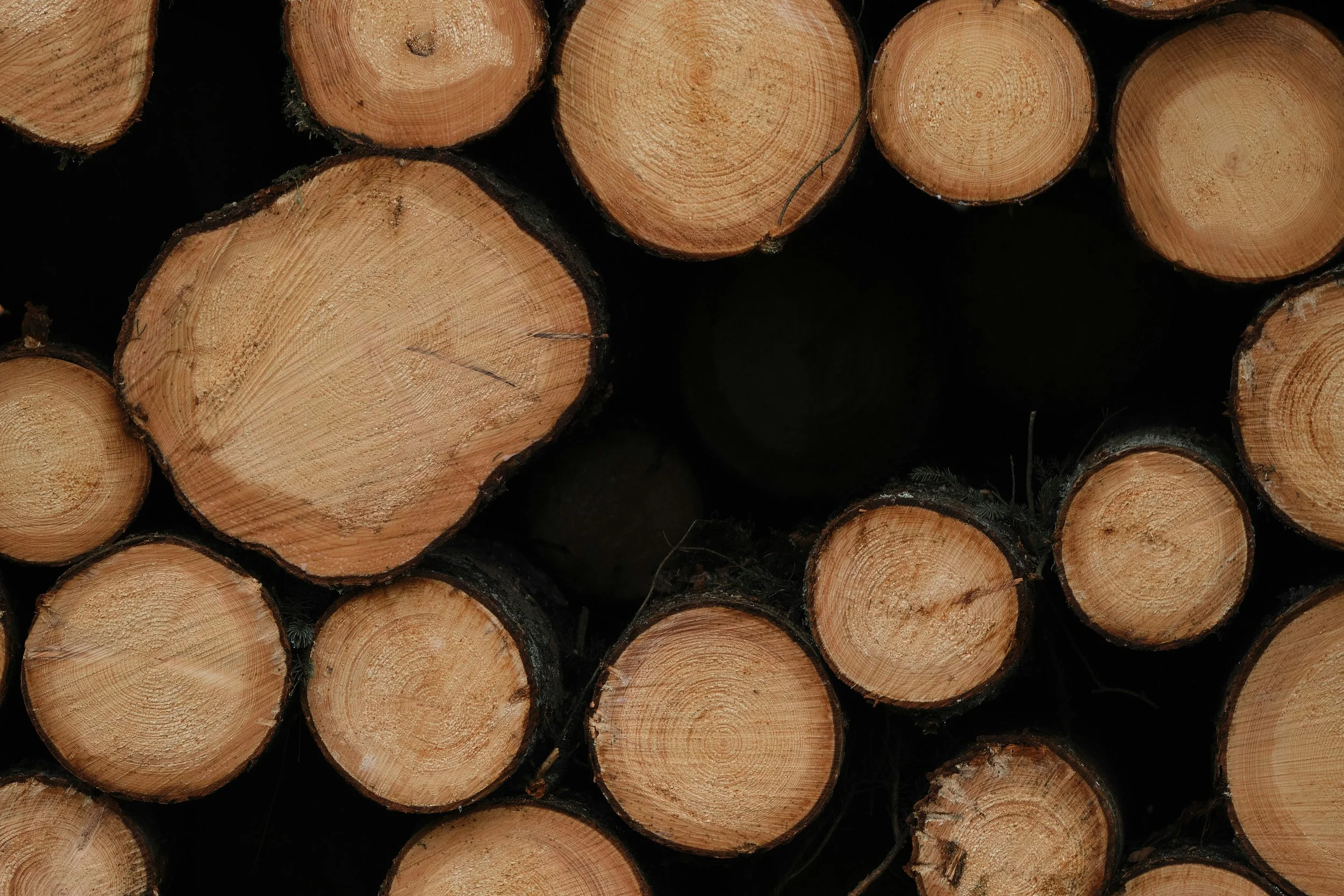Defining Semi-Synthetics
The Regenerated Naturals
I started posting on semi-synthetics when I wrote about Bamboo but realized that many people do not understand that textiles like these—bamboo, rayon, and Tencel—are not considered natural fibers but semi-synthetics. Before I delve into specific materials, I want to give a quick overview to clarify why these textiles are classified the way they are.
What Makes a Fiber Semi-Synthetic? (The Overview)
Semi-synthetic fibers (also known as regenerated cellulosic fibers) occupy a unique space in the materials industry. They are neither purely natural (like cotton or wool) nor purely synthetic (like petroleum-based polyester).
Their classification is based on two requirements:
Natural Origin: The material must begin as a long-chain natural polymer, primarily cellulose harvested from plant sources (e.g., wood pulp, bamboo, cotton waste).
Chemical Regeneration: The natural polymer must be completely dissolved using a chemical solvent and then extruded through a spinneret, fundamentally regenerating its physical structure into a usable fiber filament.
This category includes the major fibers you’ll be covering: Rayon (Viscose), Modal, Lyocell (Tencel), Cupro, and Acetate.
A Brief History of Semi-Synthetics: The Search for “Artificial Silk”
The history of semi-synthetic fibers is a story of nineteenth-century chemistry meeting the luxury of silk. These were the world’s first man-made fibers and were initially developed to create a cost-effective, high-performing alternative to expensive silk.
The Dawn of Regenerated Fibers (Late 19th Century)
The very concept of a regenerated fiber was proved in France.
Count Hilaire de Chardonnet (1884): Chardonnet patented the first commercially successful man-made fiber, demonstrating the principle of chemical regeneration by dissolving nitrocellulose and spinning it into filaments.
The Birth of Rayon (Viscose)
The material that truly launched the modern semi-synthetic era was the Viscose process, offering a safer and more scalable method.
Viscose Process (1892): Invented by chemists Cross, Bevan, and Beadle, the viscose process used caustic soda and carbon disulfide to dissolve cellulose. The resulting fiber was commercially viable, non-flammable, and had a desirable sheen and drape.
Rayon is Named (1924): The generic term “Rayon” was officially adopted in the U.S. to describe these early cellulosic fibers. Rayon became known as the “first-generation” man-made cellulosic fiber.
The Pursuit of Better Processes (20th Century)
The evolution of semi-synthetics has been driven by the need to find cleaner alternatives to the chemically intensive Viscose process.
Viscose / Rayon - First Generation - Key Advancement : Generic term for cellulose regenerated via the Viscose process. Used for fibers from both wood and bamboo. This process, the first widely used, is typically an irresponsible, open-loop system that releases harmful chemicals.
Modal - Second Generation - Key Advancement : Refined Viscose process to improve strength. Conventional modal production involves hazardous chemicals and typically lacks closed-loop recovery; look for TENCEL™ Modal which uses closed-loop systems.
Lyocell (Tencel™) - Third Generation - Key Advancement: Uses a non-toxic, closed-loop solvent system that recovers and reuses nearly 99% of the solvent, making it the most environmentally responsible conventional method.
Cupro - Specialized - Key Advancement: Made from cotton linters (cotton waste). Transforming linter into cupro involves toxic chemicals such as copper sulfate, caustic soda, and ammonia, presenting high social and environmental risks unless sourced from verified closed-loop systems.
Acetate - Specialized - Key Advancement: Made by chemically modifying cellulose. Acetate’s production relies on a cocktail of petroleum-based chemicals and toxic solvents (like phthalates) to function as a plastic, often raising concerns around pollution and microplastic shedding.
Circularity and End-of-Life: A Complex Calculation ♻️
The chemical process used to create semi-synthetics introduces complexities regarding their circularity, specifically in two key areas: Biodegradability and Chemical Recycling.
Biodegradability: The Natural Advantage
Since the final fiber structure (Rayon, Modal, Lyocell, Cupro) is fundamentally cellulose—the same polymer found in cotton or wood many people think this is a biodegradable and safe fiber for compost. Most often though these fibers are heavilyt treated with chemical finishes or blended with non-biodegratedul synthetic fibers like polyester or nylon. It’s important to research this before throwing away.
Chemical Circularity: The Modern Challenge
The method of creation dictates the fiber’s environmental impact during and after manufacturing.
Older/Conventional Processes (Viscose, Cupro, Acetate, and Modal): Often use toxic, open-loop chemical systems, meaning spent chemicals are not reused and contribute to pollution if not handled correctly.
Modern Processes (Lyocell/Tencel™ and Ecovero™): The closed-loop system is a huge leap in circularity, as it is a process-level circularity. The solvent is recovered and re-used, creating minimal manufacturing waste and drastically reducing the water and energy footprint.
The Next Generation: Redefining the Feedstock
Today’s innovators are applying the core regeneration process to new sources to achieve feedstock circularity, proving the semi-synthetic concept is key to resource management:
Semi-Synthetics from Waste Feedstocks: Utilizing agricultural waste (like citrus peels for Orange Fiber).
Semi-Synthetics from Recycled Textiles: Using chemical recycling to dissolve used cotton clothing (cellulose) and regenerate it into new Lyocell (Circ Lyocell).
By focusing on reducing chemical consumption, closing the loop on solvents, and utilizing waste as the raw natural material, the semi-synthetic category is transitioning from a pollution-heavy class to a highly innovative foundation for circular textiles.
One last point: Differentiating Bio-Synthetics
It’s crucial to distinguish true semi-synthetics from other bio-based innovations like Sorona® or Piñatex. While these may start from natural or bio-based feedstocks, their non-cellulosic final structure or reliance on non-biodegradable coatings often places them outside the definition of a regenerated cellulosic fiber.
